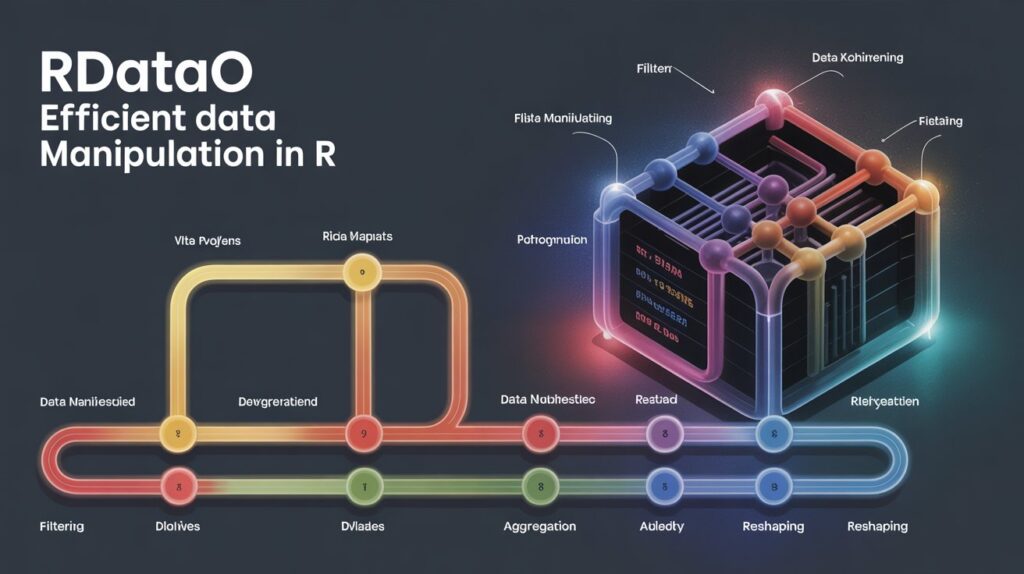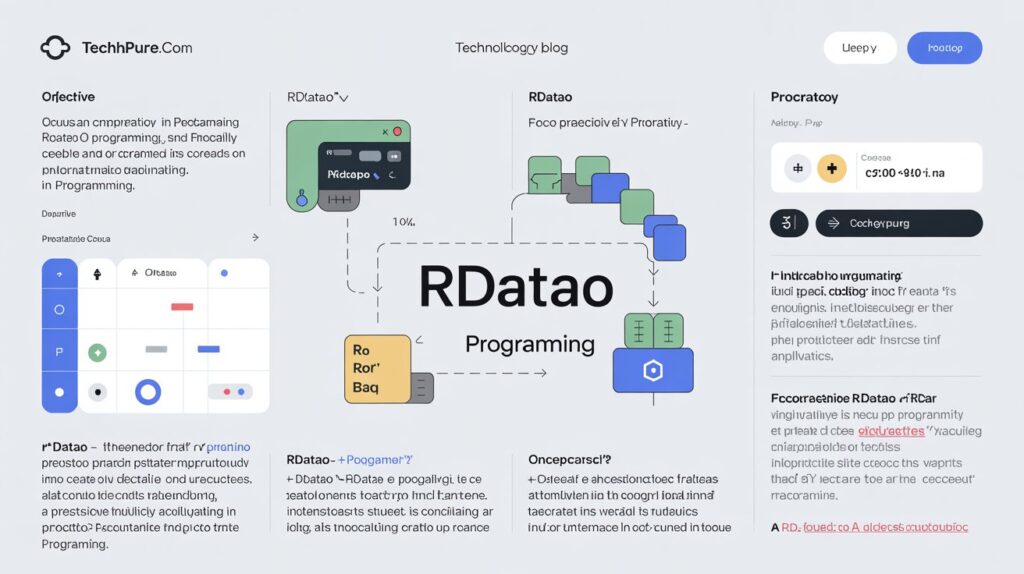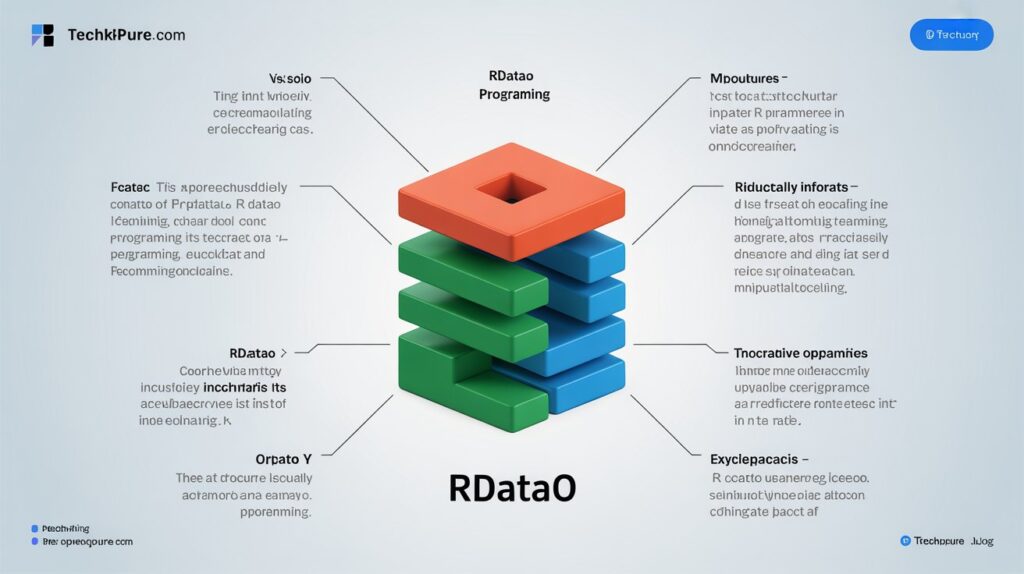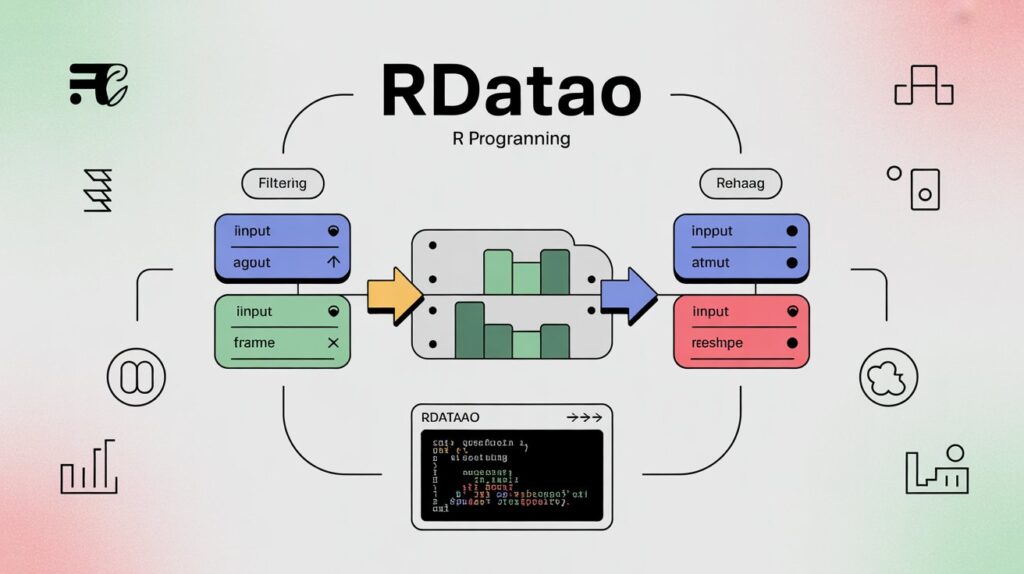If you work with R programming, you may have come across the word rdatao. At first, it might sound like a brand or software, but it actually refers to R’s way of handling and storing data. In simple words, rdatao is linked to R data objects—these are the pieces of data you create and use while working in R. Understanding how these objects are stored, saved, and reused is very important for anyone learning R. This blog will break it all down in a clear and simple way, so even beginners can understand how rdatao works and why it matters.

What is rdatao? Understanding the Basics
The word rdatao is often used informally to describe R Data Objects—these are the main types of data you use in the R programming language. This can include anything like vectors, data frames, lists, or even entire datasets. When you work in R, you create and change these objects as you analyze or visualize your data. All of these pieces are stored in your R environment, which you can save and load later using special R file types. Many people also refer to .RData or .rda files when talking about rdatao.
It’s important not to confuse rdatao with a separate tool or program. It’s not software—it’s just a term often used to describe saved R data or R data handling. In technical terms, rdatao relates to how R helps you save your work, store objects, and reload them later without repeating your steps. R uses file formats like .RData and .RDS to save this data. These formats are different but serve the same purpose: they help you work smarter by reusing what you’ve already done.
rdatao in the R Programming Environment
In R, your data lives in what’s called the environment. This is where everything you create—like data frames, variables, or results—gets stored while you work. The term rdatao connects closely to this space, because it refers to the objects inside this environment. These objects can be saved so you don’t lose your progress. You don’t have to recreate everything each time you open R. This is very helpful for data analysis, especially when working with large or complex datasets that take time to build.
To save your rdatao, you can use built-in functions like save() or save.image(). These commands take one or more of your R objects and store them in a file, often with the .RData extension. When you want to bring your saved work back, you can use the load() function. This puts all the objects back into your environment, just like they were before. This way, rdatao helps you keep your work safe and makes your process more efficient. It’s like saving a game—you can pick up right where you left off.

.RData vs .RDS vs rdatao – What’s the Difference?
R gives you more than one way to save your data, and that’s where .RData, .RDS, and rdatao come in. A .RData file can store multiple objects at once, like a full snapshot of your R workspace. On the other hand, .RDS is used when you want to save just one object at a time. These two formats are both used to save rdatao, but they work slightly differently depending on what you need.
For example, if you’re working on a big project with many different types of data, saving everything into a .RData file might be easiest. But if you only want to save one table or model and load it later by name, .RDS is better. It keeps things more controlled and tidy. Also, .RDS lets you read your data back into any variable name, which isn’t possible with .RData. So, both formats are part of how rdatao works, and knowing when to use each one can save you time and effort.
Why rdatao Matters – Benefits and Limitations
rdatao helps make your work in R smoother and faster. Instead of doing everything from scratch every time, you can save your data and load it again later. This saves time and also reduces mistakes. It also makes collaboration easier. You can send someone a .RData or .RDS file and they can use your exact data and models. This is useful in research and business projects where teams need to work on the same files and results.
But like any tool, rdatao has its limits. A big issue is that .RData files can load all their content at once, which might overwrite things in your environment without warning. Also, these files don’t store extra notes or labels to explain what each object means. So, if you save a file and come back to it weeks later, it might be hard to remember what’s inside. That’s why many people prefer .RDS for more control. Even though rdatao is useful, you need to use it carefully to avoid confusion or data loss.

rdatao in Cross-Language Data Workflows
Today, many data teams use more than one language—like R and Python—in the same project. So, a question comes up: can rdatao be used outside of R? The answer is yes, but with extra tools. There are Python packages like pyreadr that help read .RData and .RDS files. This makes it possible to share your R results with Python users without losing your work. It opens doors for teams to work together, even if they use different languages.
Still, this cross-language use has some limits. Python might not always support every R object perfectly, especially if it’s a custom class or a complex list. So, it’s best to keep your rdatao simple if you plan to share it. Stick to tables, data frames, and basic structures that both R and Python can understand. This ensures smoother teamwork and fewer errors when moving data between tools. rdatao becomes even more powerful when you use it across platforms the right way.
rdatao vs Full Data Analytics Platforms
Some people think rdatao is like a full analytics platform, but it’s not. It’s just a way to save and load your R data. Platforms like Databricks, Power BI, or Google BigQuery offer full services like data storage, sharing, dashboards, and real-time analytics. rdatao only deals with saving R objects and bringing them back into your project. So, it’s more like a helper tool within R, not a complete system on its own.
However, rdatao can still be part of a big data setup. For example, you might use R to analyze part of a dataset, save your model with .RDS, and then upload that to a larger system. This shows that rdatao fits into the bigger picture when used the right way. It’s not a competitor to big data platforms—it’s a small but powerful piece that helps you keep your R work organized and reusable.
Best Practices for Managing rdatao Files
To make the most of rdatao, it’s good to follow some best practices. First, always give your files clear and helpful names. This helps you remember what’s inside without needing to load the file. Also, save only what you need. Instead of saving your entire workspace with save.image(), choose specific objects using save(). This keeps your files smaller and easier to manage.
Another useful tip is to keep your files versioned. You can add dates or version numbers to the file name, like model_v2_2024.RDS. This helps you avoid overwriting older work and keeps track of changes. Finally, don’t rely only on rdatao files. It’s smart to keep a script that shows how you created your data. That way, if something goes wrong or if someone else needs to understand your process, you have a record. Good file management turns rdatao into a reliable part of your workflow.
FAQ
What does rdatao mean? It’s a casual way of referring to R Data Objects or .RData files that store your data in R.
Can I open rdatao files in other programs? Yes, with tools like pyreadr, you can read them in Python too.
Is rdatao a tool or software? No, it’s just a way to describe saved data from R.
What’s the best way to save my R models? Use saveRDS() to store models as single objects with more control.
Should I include rdatao files in version control (like Git)? Usually no—it’s better to store the R scripts and keep large .RData files separate to avoid bloat.
Conclusion
rdatao may seem like a simple thing, but it plays an important role in your R projects. By saving your work and loading it when needed, you avoid wasting time and reduce mistakes. It helps teams work together and allows you to repeat your analysis without starting over. Whether you’re saving small tables or big models, rdatao helps you stay organized and focused.
But don’t forget to use rdatao wisely. Give your files proper names, avoid saving everything blindly, and always keep a record of what you did. By following best practices, you make your data handling smoother, cleaner, and more future-proof. So next time you’re working in R, think of rdatao not just as a file—but as a smart way to save time, share results, and stay in control of your data.
